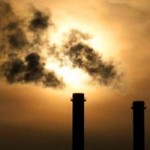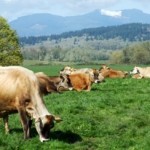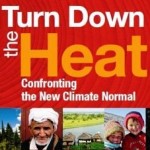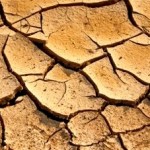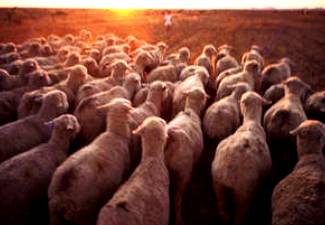
Rome – Greenhouse gas emissions by the livestock sector could be cut by as much as 30 percent through the wider use of existing best practices and technologies, according to a new study released on September 26 by the UN Food and Agriculture Organization (FAO).
The report, “Tackling Climate Change Through Livestock: A Global Assessment of Emissions and Mitigation Opportunities”, represents the most comprehensive estimate made to-date of livestock’s contribution to global warming – as well as the sector’s potential to help tackle the problem.
All told, greenhouse gas (GHG) emissions associated with livestock supply chains add up to 7.1 gigatonnes (GT) of carbon dioxide equivalent (CO2-eq) per year – or 14.5 percent of all human-caused GHG releases.
The main sources of emissions are: feed production and processing (45 percent of the total), outputs of GHG during digestion by cows (39 percent), and manure decomposition (10 percent). The remainder is attributable to the processing and transportation of animal products. (Click here for additional key facts and findings from FAO report.)
To arrive at its estimates, FAO conducted a detailed analysis of greenhouse gas emissions at multiple stages of various livestock supply chains, including the production and transport of animal feed, on-farm energy use, emissions from animal digestion and manure decay, as well as post-slaughter transport, refrigeration and packaging of animal products.
Large Potential for Cuts
By drilling down into where and how emissions occur, the report reveals that significant emissions reductions are within the reach of livestock producers.
Wider adoption of existing best practices and technologies in feeding, health and husbandry, and manure management – as well as greater use of currently under-utilized technologies such as biogas generators and energy-saving devices – could help the global livestock sector cut its outputs of global warming gases as much as 30 percent by becoming more efficient and reducing energy waste.
Within livestock production systems, there is a strong link between resource use efficiency and the intensity of greenhouse gas emissions, notes FAO’s report. The potential for achieving emissions reductions lies in enabling all livestock producers to change to practices already being used by the most efficient operators. (Click here for livestock production practices that can help reduce GHG emissions.)
“These new findings show that the potential to improve the sector’s environmental performance is significant – and that realizing that potential is indeed do-able,” said Ren Wang, FAO Assistant Director-General for Agriculture and Consumer Protection. “These efficiency gains can be achieved by improving practices, and don’t necessitate changing production systems. But we need political will, better policies and most importantly, joint action.”
With world demand for livestock products continuing to grow strongly in almost all developing countries, he added, “it is imperative that the sector starts working now to achieve these reductions, to help offset the increases in overall emissions that future growth in livestock production will entail.”
Many of the actions FAO recommends for improving efficiency and reducing greenhouse gas emissions would also boost production – providing people with more food and higher incomes, with benefits for food security and poverty reduction.
Currently, livestock raising supports the livelihoods of hundreds of millions of people and represents an increasingly important source of protein in many regions that have long struggled with chronic hunger and malnutrition.
Potential Across the Board
Substantial emissions reductions can be achieved across all species, systems and regions, FAO’s report argues, with the greatest potential for cuts found in low productivity ruminant livestock systems in South Asia, Latin America and Africa.
However, in developed countries – where emission intensities are relatively low but the overall volume of production and therefore emissions is high – even small decreases in intensity could still add-up to significant gains. This is the case, for example, for dairy farming in Europe and North America, and for pork raising in East Asia.
Cattle-raising contributes 65 percent of the livestock sector’s total greenhouse gas emissions, but also offers the largest potential for reductions.
Making the Change
Enabling the livestock production sector – a diverse, globe-spanning activity which varies greatly from country to country – become more efficient and reduce emissions will require a mix of policies, incentives, and on-the-ground work, FAO says.
There needs to be a focus on practice innovation, supported by knowledge transfer, financial incentives, regulations, and awareness raising. Particularly important, better policies are needed to facilitate the transfer and use of efficient practices and technologies already adopted by a minority of producers and to encourage the development of new solutions.

